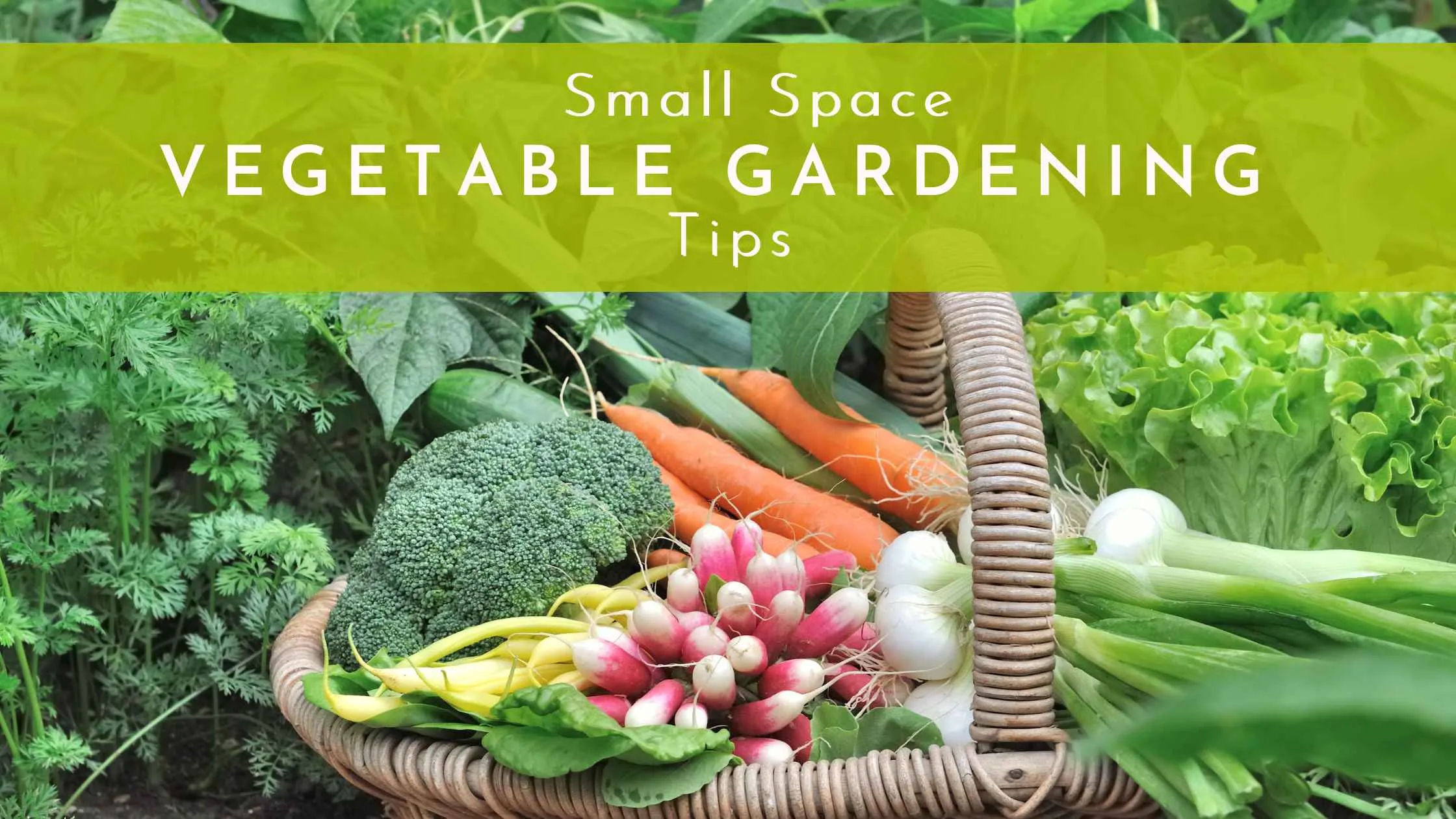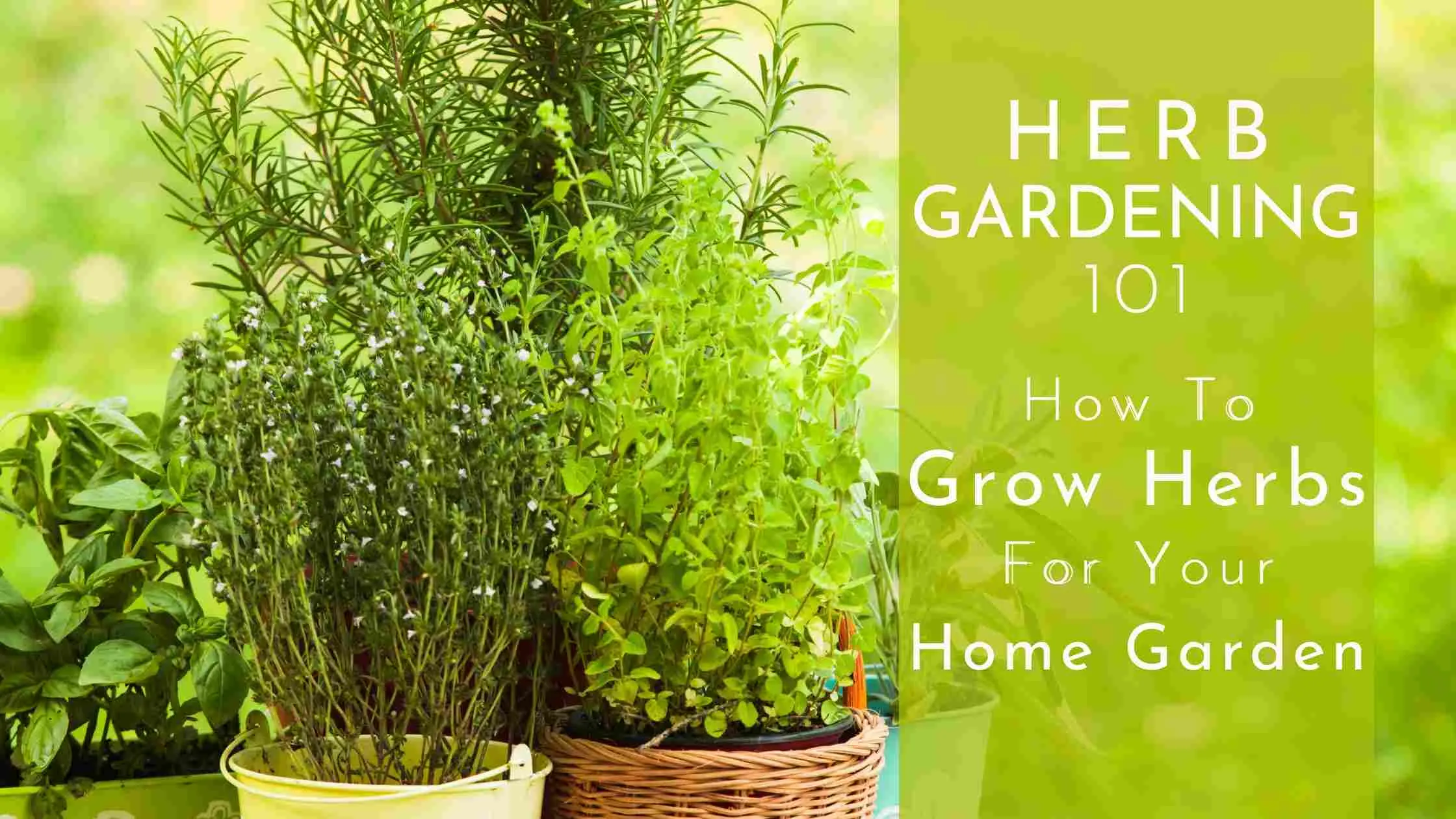A Guide to Growing Strawberries At Home
Are you ready to grow your very own strawberries in your backyard? Well, you're in for a treat! In this article, we'll explore the ins and outs of growing these juicy, red gems in our beautiful province of Ontario.
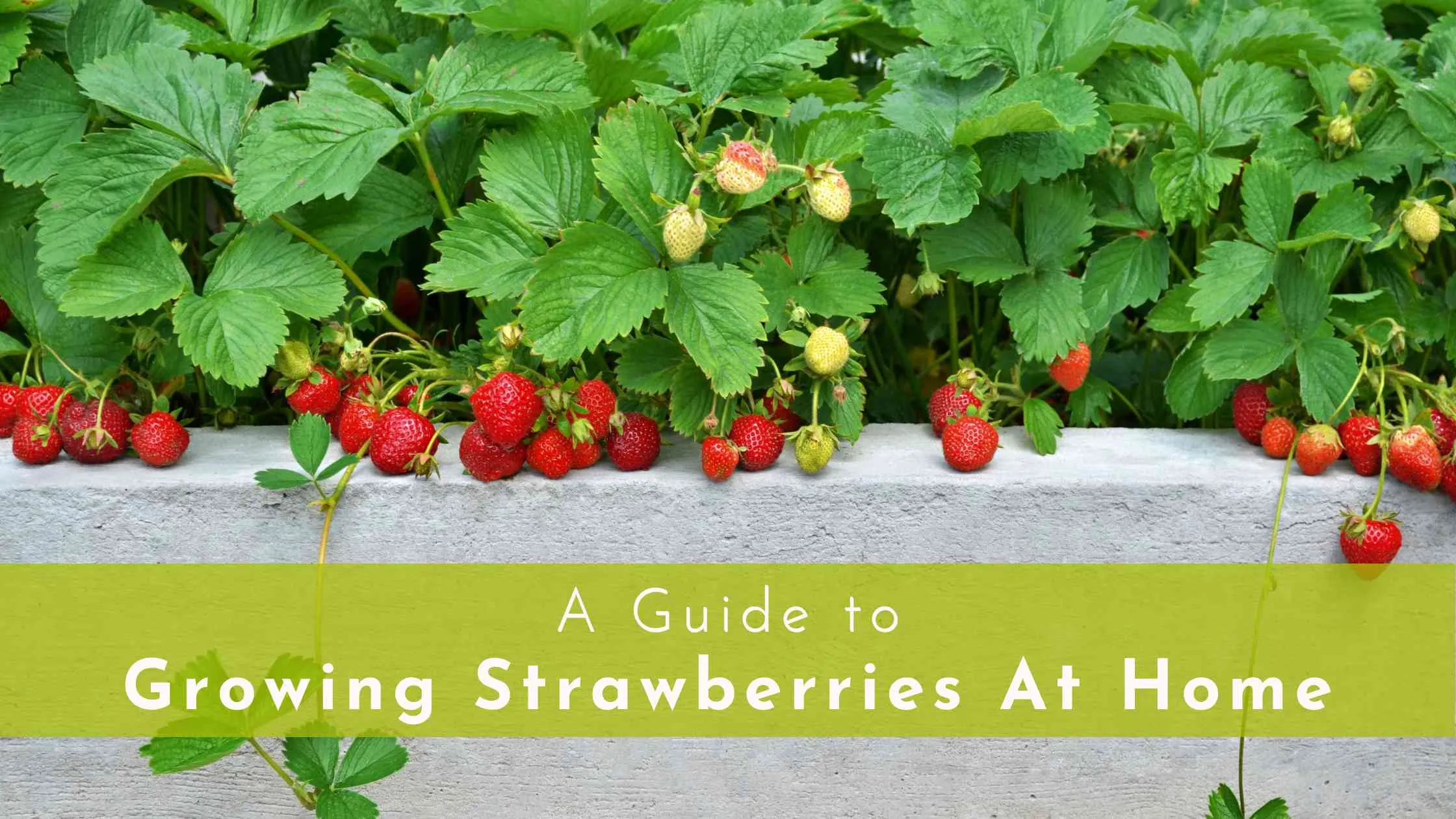
Latin Name: Fragaria
Family: Rosaceae family, also known as the rose family.
Difficulty/Experience Level: Beginner-friendly.
Season: late spring to early summer,
Light Exposure: full sun, at least 6-8 hours of direct sunlight daily.
Now that we've covered the basics, let's dive into the nitty-gritty of growing strawberries in your backyard in southern Ontario:
Strawberry Varieties to Grow in Ontario
Ontario's climate is unique, and it's essential to select strawberry varieties that can withstand its fluctuations.
Types of Strawberries
There are several different types of strawberry plants, each with its own characteristics and growing habits. The three primary types of strawberry plants are:
- June-bearing Strawberries: These strawberries produce a single, large crop of strawberries in late spring to early summer, usually during the month of June. June-bearing strawberries are the most common type and are known for their sweet, flavorful fruit. They typically produce the largest berries and are a favorite for fresh eating, preserves, and baking. Some popular varieties of June-bearing strawberries include 'Jewel,' 'Honeoye,' and 'Allstar.'
- Everbearing Strawberries: Everbearing strawberries, as the name suggests, produce fruit throughout the growing season. They have two main harvests: one in late spring and another in late summer to early fall, with sporadic smaller harvests in between. Everbearing strawberries are great for extending the strawberry season, and they are well-suited for gardeners who want a continuous supply of berries. Popular varieties of everbearing strawberries include 'Ozark Beauty' and 'Quinault.'
- Day-Neutral Strawberries: Day-neutral strawberries are similar to everbearing varieties in that they produce fruit throughout the growing season. However, day-neutral strawberries do not rely on day length to initiate flowering and fruiting. This makes them suitable for growing in a wider range of climates, including areas with shorter daylight hours. They are known for their smaller, but still delicious, berries. Popular day-neutral varieties include 'Tristar' and 'Seascape.'
In addition to these main types, there are also various strawberry cultivars within each category, each with its own unique flavor, size, and disease-resistance characteristics.
When choosing which type of strawberry to grow, consider your local climate, the length of your growing season, and your personal taste preferences. Whether you opt for June-bearing, everbearing, or day-neutral strawberries, you're sure to enjoy the delightful taste of homegrown berries fresh from your garden.
Selecting the Right Location
Choose a sunny, well-drained spot in your garden with slightly acidic soil. If your soil's pH is too high, consider amending it to create the ideal conditions for your strawberries.
Preparing the Soil
Before planting, conduct a soil test to understand the soil’s pH and nutrient composition better. This information will help you determine any necessary soil amendments to optimize soil fertility for strawberry growth.
Add organic matter, such as compost or well-rotted manure, to improve soil structure, increase water retention, and provide essential nutrients for plant growth. Adding organic matter into the soil also encourages beneficial soil organisms, which contribute to overall soil health.
I highly recommend using raised beds or rows for growing strawberries. Raised beds offer several benefits, including improved drainage, better soil aeration, and reduced risk of soil compaction. By elevating the planting area, raised beds also help warm the soil more quickly in the spring, allowing for earlier planting and extended growing seasons.
Planting Strawberries
Timing is crucial when it comes to planting strawberries. Aim for early spring or late summer/early fall for the best results. Early spring planting allows the plants to establish themselves before the onset of hot summer temperatures, while fall planting gives them time to develop strong roots before winter dormancy.
Ensure proper spacing, planting depth, and initial care to give your strawberry plants the best start.
- Spacing: Space plants: 12 to 18 inches apart in rows spaced 2 to 3 feet apart, to allow for adequate air circulation and room for growth. I use the intensive planting method mentioned above, to include complementary or companion plants can be planted in between the strawberry plants to maximize the space.
- Depth: Plant your strawberry plants with the crown (the point where the stems meet the roots) level with the soil surface.
- Initial Care: Once planted, water thoroughly, add mulching or practice intensive planting to conserve moisture and suppress weeds. This gives your strawberry plants the best start possible.
Caring for Your Strawberry Plants
Caring for your strawberry plants is essential to ensure healthy growth and a bountiful harvest. Maintain a consistent watering schedule, fertilize as needed, and keep weeds at bay. Don't forget to protect your strawberries from birds and other critters who might have their eyes on your tasty harvest. Let's take a closer look at each aspect of care:
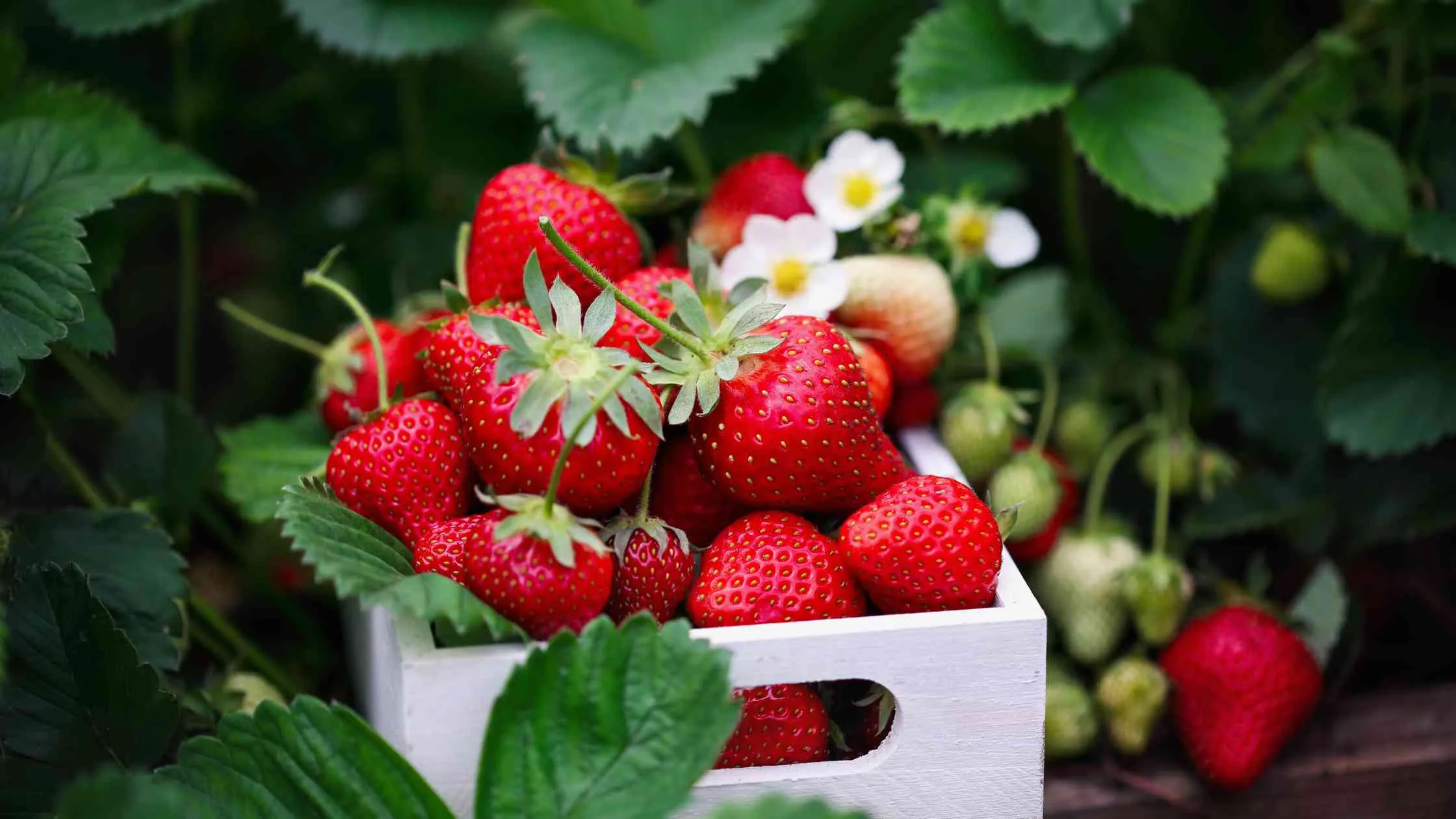
Maintaining a Consistent Watering Schedule:
Strawberry plants require regular watering to thrive, especially during the flowering and fruiting stages. Aim to keep the soil consistently moist but not waterlogged, as soggy conditions can lead to root rot and other problems. Water your strawberry plants deeply, ensuring that the soil is evenly moist, particularly during dry spells or hot weather.
Avoid overhead watering, as wet foliage can increase the risk of fungal diseases. Instead, water the soil around the plants using a soaker hose or drip irrigation system to deliver water directly to the roots.
Fertilize Your Plants as Needed:
To promote healthy growth and fruit production, fertilize your strawberry plants appropriately. Before planting, incorporate a balanced fertilizer or compost into the soil to provide essential nutrients. Once the plants are established, apply a side-dressing of fertilizer in early spring before flowering and again after the first harvest. Choose a fertilizer formulated specifically for strawberries or use a balanced, slow-release fertilizer with a nitrogen-phosphorus-potassium (N-P-K) ratio of 10-10-10. Be sure to follow the manufacturer's instructions for application rates and timing to avoid overfertilization, which can lead to excessive foliage growth at the expense of fruit production.
Keep Weeds Away:
Weeds compete with strawberry plants for water, nutrients, and sunlight, so it's essential to keep them under control. Regularly inspect your strawberry bed for weeds and promptly remove any that sprout up. Use mulch, such as straw or shredded leaves, to suppress weed growth and retain soil moisture. Apply a thick layer of mulch around the base of the plants, taking care to leave space around the crowns to prevent rot. Mulching also helps regulate soil temperature and reduce fruit rot by keeping strawberries off the ground.
Another method to reduce weeds is intensive planting, where plants are planted close together to protect the soil, thereby retaining moisture and reducing weeds.
Hand-pulling weeds is an effective method, but if the weed infestation is severe, consider using a shallow cultivation tool to gently loosen and remove weeds without damaging the strawberry roots.
Protect Your Strawberries from Birds and Other Critters:
Birds, squirrels, and other wildlife are notorious for snacking on ripe strawberries, so it's essential to protect your harvest from these hungry critters. One of the most effective ways to deter birds is by covering your strawberry plants with bird netting. Secure the netting over the plants using stakes or hoops, ensuring that it extends to the ground to prevent birds from accessing the berries from below. Alternatively, you can install scare devices, such as reflective tape, wind chimes, or predator decoys, to frighten away birds and other pests.
Regularly monitor your strawberry patch for signs of animal damage, and take action promptly to safeguard your crop.
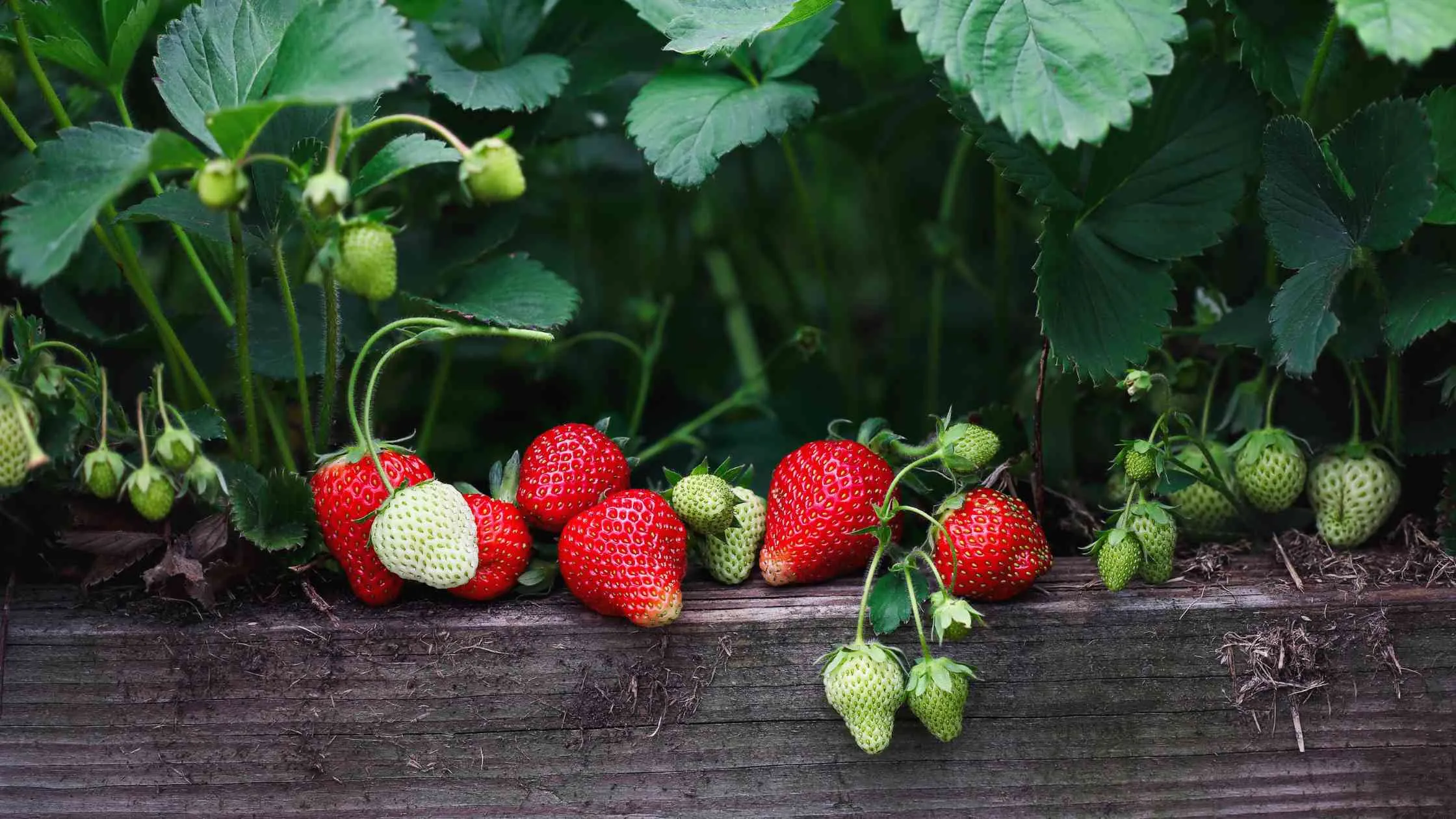
Pruning and Runner Control
Pruning and runner control are crucial aspects of maintaining healthy and productive strawberry plants.
Pruning helps maintain healthy plants and control their growth. Pruning involves the removal of old, diseased, or overcrowded foliage, which promotes better air circulation and reduces the risk of fungal diseases. Additionally, pruning encourages the development of larger, sweeter berries by directing the plant's energy toward fruit production rather than foliage.
Keep an eye on those runners, as they can quickly take over if left unchecked. Runners are long, trailing stems that emerge from the mother plant and produce new plantlets at their tips. While runners can be a natural means of strawberry propagation, allowing too many to develop can result in overcrowding and reduced fruit yield. To control runners, simply snip them off from the mother plant using sterilized scissors or pruning shears.
By practicing proper pruning and runner control, you can ensure that your strawberry plants remain vigorous, healthy, and productive throughout the growing season.
Disease and Pest Management
Strawberry plants are susceptible to a variety of pests and diseases that can affect their health and reduce fruit yield. Prevention is key to a healthy strawberry crop. Here are some common pests and diseases that can attack strawberry plants, along with strategies to prevent or control them:
Common Pests:
- Aphids: Aphids are small, soft-bodied insects that feed on the sap of strawberry plants, causing leaves to curl and distort. To prevent aphid infestations, you can introduce natural predators like ladybugs or use insecticidal soap.
- Spider Mites: These tiny arachnids can suck the sap from strawberry leaves, causing stippling and bronzing of the foliage. Regularly spraying the undersides of leaves with water can help deter spider mites. Predatory mites can also be introduced as biological control.
- Slugs and Snails: These mollusks feed on strawberry leaves and fruit, leaving behind holes and damage. To prevent slugs and snails, use physical barriers like copper tape, beer traps, or diatomaceous earth. Handpicking them in the early morning or evening can also help.
- Japanese Beetles: These shiny, metallic-green beetles can skeletonize strawberry leaves. Handpicking, neem oil, or using pheromone traps can help manage Japanese beetle infestations.
- Fruit Flies: Fruit flies lay their eggs in ripe or overripe strawberries, leading to maggots in the fruit. Use fruit fly traps and maintain good sanitation by picking ripe fruit promptly.
Common Diseases:
- Gray Mold (Botrytis cinerea): Gray mold affects strawberries during periods of high humidity or prolonged wet conditions. To prevent gray mold, space plants for good air circulation, avoid overhead watering, and remove infected fruit and foliage promptly.
- Powdery Mildew: Powdery mildew causes a white, powdery growth on strawberry leaves and can affect fruit quality. Choose resistant varieties and ensure proper spacing for air circulation. Fungicidal sprays can also be used.
- Leaf Spot (Mycosphaerella fragariae): Leaf spot appears as purple-black lesions on strawberry leaves. Planting disease-resistant varieties, practicing crop rotation, and removing infected leaves can help control leaf spot.
- Verticillium Wilt: This soilborne fungus can cause wilting and yellowing of strawberry plants. Planting in well-drained soil and practicing crop rotation can help prevent verticillium wilt.
- Root Rot: Root rot, often caused by Phytophthora spp., affects strawberry roots and can lead to plant death. Avoid overwatering, ensure proper drainage, and plant in raised beds to reduce the risk of root rot.
- Angular Leaf Spot: This bacterial disease causes angular, water-soaked lesions on strawberry leaves. Plant disease-free material, avoid overhead watering, and practice good sanitation to reduce the spread of angular leaf spot.
To effectively manage pests and diseases in your strawberry garden, it's essential to monitor your plants regularly. Early detection and action can prevent the spread of problems and minimize damage. Additionally, practicing good garden hygiene, including removing and disposing of infected plant material, can go a long way in preventing the recurrence of issues in subsequent growing seasons. When necessary, and especially with food, consider using organic controls following label instructions to ensure the safety of your crop and the environment.
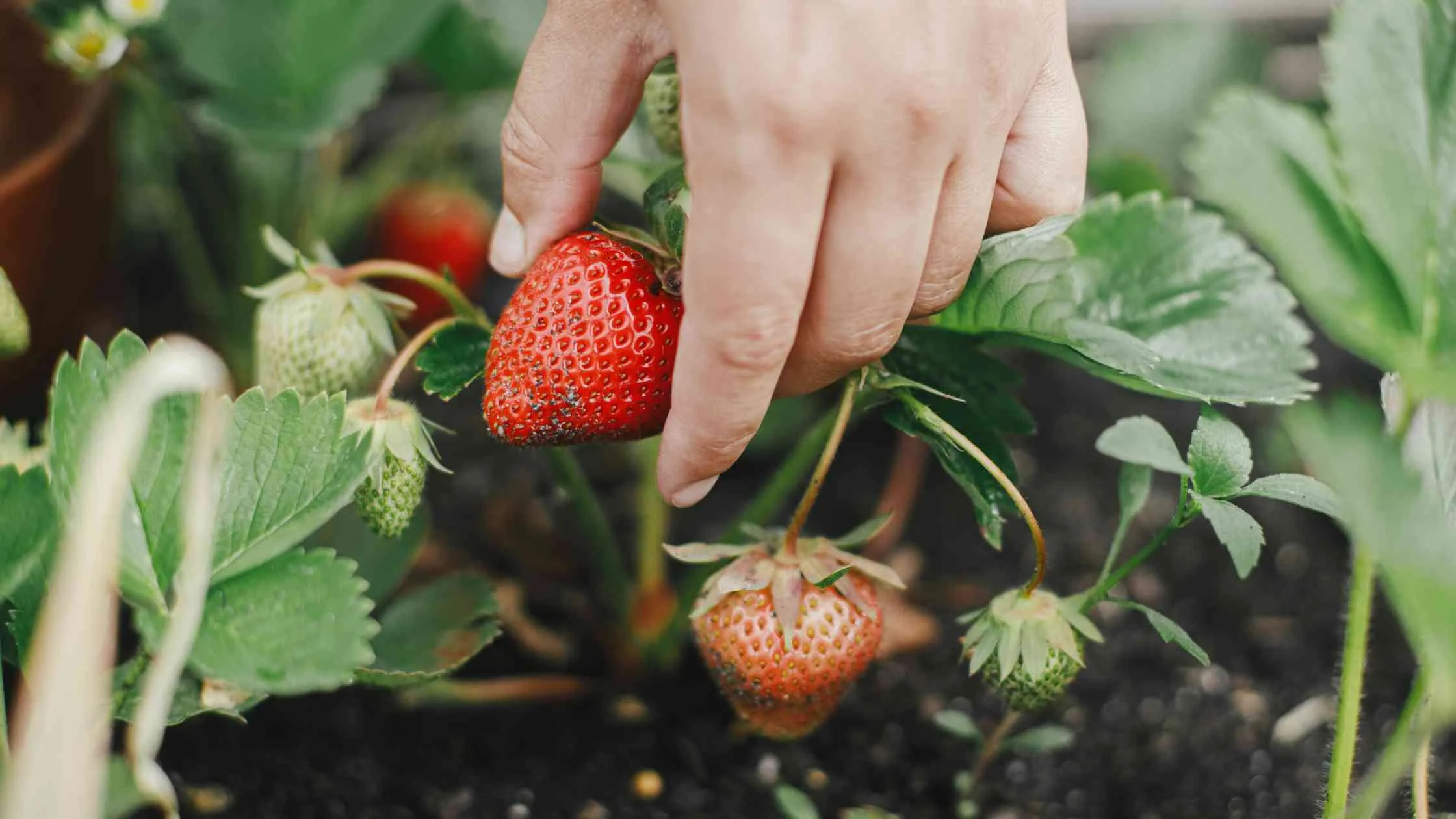
Harvesting Strawberries
Timing is everything when it comes to harvesting. Recognize the signs of ripe strawberries to enjoy the sweetest fruits:
- Color: Ripe strawberries typically have a vibrant red color. Depending on the variety, they may also have hints of pink or even deep burgundy. Avoid strawberries that are mostly green or white, as they are likely underripe.
- Texture: Gently squeeze the berry between your fingers. Ripe strawberries should feel firm but yield slightly to pressure. Overripe strawberries will be mushy, while underripe ones will feel hard and unyielding.
- Fragrance: Ripe strawberries often have a sweet, fruity aroma. Sniff near the stem end of the berry. If it smells sweet and fragrant, it's likely ripe and ready to be picked.
- Size: Depending on the variety, ripe strawberries are typically medium to large in size. However, the size can vary depending on factors such as the cultivar and growing conditions. Look for berries that are plump and well-formed.
- Shine: Ripe strawberries often have a natural shine to their skin. Avoid berries that appear dull or have blemishes, as they may be past their prime.
- Taste: Of course, the best way to determine if a strawberry is ripe is by tasting it! Once you've identified a berry that looks and smells ripe, pluck it from the plant and take a bite. Ripe strawberries should be juicy, sweet, and bursting with flavor.
Use proper harvesting techniques for your homegrown crop:
- Choose the Right Time: As discussed above, wait until the strawberries are fully ripe before harvesting. Ripe strawberries should be uniformly red (or pink for certain varieties), firm, and have a sweet aroma.
- Harvest in the Morning: It's best to harvest strawberries in the morning when temperatures are cooler. This helps preserve the fruit's freshness and flavor.
- Use Scissors or Pruning Shears: To harvest strawberries, use a pair of sharp scissors or pruning shears. This helps prevent damage to the delicate fruit and minimizes the risk of spreading diseases.
- Cut the Stem: Carefully snip the stem of each ripe strawberry with the scissors or shears, leaving a small portion of the stem attached to the fruit. Cutting the stem rather than pulling the berry helps prevent damage to the plant and ensures that the fruit stays fresh longer.
- Handle with Care: Handle the harvested strawberries gently to avoid bruising or crushing them. Place the harvested berries in a shallow basket or container lined with paper towels to cushion them and absorb excess moisture.
- Harvest Frequently: Check your strawberry plants regularly during the peak harvesting season, which typically lasts for several weeks. Harvest ripe berries every 2-3 days to prevent overripening and ensure that you enjoy the freshest fruit.
- Leave Unripe Berries: If you come across strawberries that are still green or partially red, leave them on the plant to ripen further. They will continue to develop and mature, allowing you to harvest them in subsequent days.
- Clean and Store: Once you've finished harvesting, gently rinse the strawberries under cool running water to remove any dirt or debris. Avoid soaking the berries, as excess moisture can promote spoilage. Pat them dry with a paper towel before storing them in the refrigerator
Winterizing Strawberry Plants
Ontario winters can be harsh, so make sure to prepare your strawberry plants for the cold months by mulching and covering them with either a cold frame or row cover.
Start Growing Your Own Strawberries
Growing strawberries in Ontario, Canada is a rewarding experience. Not only will you enjoy the sweet taste of your homegrown berries, but you'll also connect with the beauty of nature and the joy of nurturing your own garden.
With proper care and attention, your “strawberry patch” will reward you with sweet, juicy fruit season after season.
So, roll up your sleeves, grab your gardening gloves, and let's get those strawberries growing! Share your newfound knowledge with friends and family, and together, let's savor the delicious taste of Ontario-grown strawberries.



